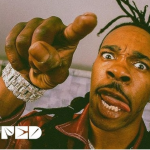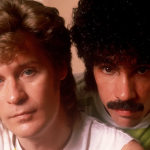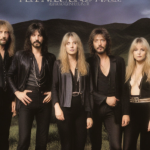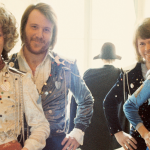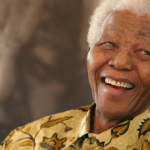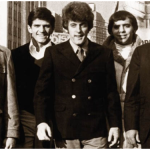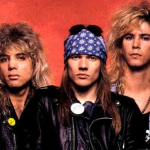“Master Blaster (Jammin’)”- Stevie Wonder’s

Released in 1980 as the lead single from his album Hotter than July, Stevie Wonder’s “Master Blaster (Jammin’)” stands as a powerful fusion of reggae rhythms and socially conscious lyrics. The song is a tribute to the legendary Bob Marley and reflects Stevie Wonder’s deep admiration for both Marley’s music and the messages of peace, love, and unity that reggae embodies. Through its infectious groove and uplifting lyrics, “Master Blaster” celebrates the potential for music to bring people together across cultural and social divides.
Musically, “Master Blaster (Jammin’)” is heavily influenced by reggae, featuring a prominent bassline, syncopated rhythms, and the distinctive offbeat guitar strumming characteristic of the genre. The song’s production, overseen by Stevie Wonder himself, combines these reggae elements with Wonder’s signature use of synthesizers and horns, creating a rich and dynamic sound. The rhythm section, with its deep grooves and steady beats, forms the backbone of the track, while the brass and keyboard arrangements add layers of melody and texture. This blend of reggae and Wonder’s unique musical style results in a track that is both fresh and deeply rooted in the traditions it honors.
Stevie Wonder’s vocal performance in “Master Blaster (Jammin’)” is infused with energy and joy. His delivery is smooth yet powerful, reflecting the celebratory nature of the song. Wonder’s voice dances over the rhythm with effortless grace, particularly in the chorus, where he declares, “We’re in the middle of the makin’s of the master blaster jammin’.” The repetition of the word “jammin’” not only pays homage to Marley’s famous track “Jamming” but also reinforces the song’s theme of collective enjoyment and unity through music.

Lyrically, “Master Blaster (Jammin’)” is both a tribute to Bob Marley and a broader message of hope and togetherness. The song’s verses touch on themes of peace, resilience, and the power of music to inspire positive change. Wonder sings of a world “where the mighty world of joy can be found,” envisioning a future where love and music overcome adversity. The lyrics reflect a deep sense of optimism, a belief that despite the challenges of the time—such as social injustice and racial inequality—people can come together and create a better world through the power of music.

The song’s chorus, with its call to “jam,” serves as both an invitation and a declaration. It invites listeners to join in the celebration, to come together and find joy in the music, while also declaring the transformative power of collective action and unity. The use of the word “master” in the title suggests a level of mastery or expertise, possibly referring to Marley’s influence and Wonder’s own role as a musical innovator.
“Master Blaster (Jammin’)” was a commercial success, reaching the top ten in several countries and becoming one of Stevie Wonder’s most popular songs. Its success was not only a testament to Wonder’s enduring appeal but also to the widespread influence of reggae music. The song’s upbeat rhythm and positive message resonated with audiences, making it a hit on dance floors and radio stations alike.

The lasting appeal of “Master Blaster (Jammin’)” lies in its infectious rhythm, positive lyrics, and the seamless fusion of different musical traditions. The song stands as a celebration of cultural exchange, showing how music can bring together elements from different genres to create something new and meaningful. Stevie Wonder’s tribute to Bob Marley and reggae music highlights the power of music to transcend boundaries and bring people together in celebration and unity.
In conclusion, Stevie Wonder’s “Master Blaster (Jammin’)” is a vibrant and uplifting track that showcases the artist’s ability to blend different musical influences into a cohesive and powerful statement. Through its reggae-inspired sound, joyful lyrics, and Wonder’s passionate performance, the song remains a timeless anthem of unity and hope. “Master Blaster (Jammin’)” exemplifies the potential of music to inspire, uplift, and bring people together, making it a cherished classic in Stevie Wonder’s extensive catalog.
